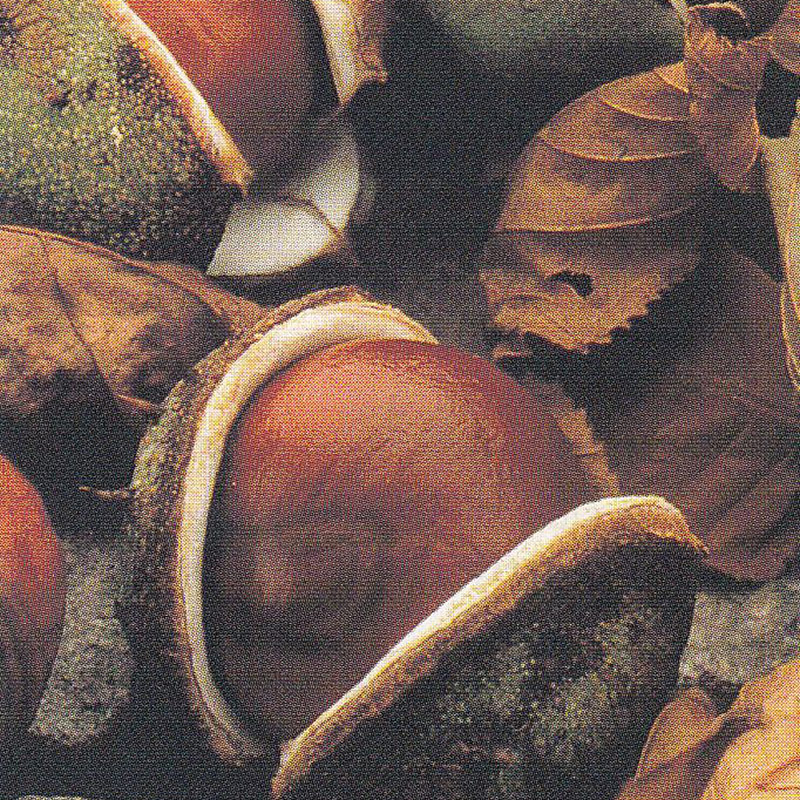Botanical name
Aesculus hippocastanum L.
Family
Sapindaceae
Common name
European horse chestnut, Conker tree
Information about the plant
The horse chestnut is a deciduous tree that probably arrived in Central Europe from Turkey at the end of the 16th century, used as horse feed. Today, it is of great importance in Europe as an avenue and park tree, but it also grows wild from cultivation. "Aesculus" (Latin) is described as "a type of oak of lofty stature and solid wood, sacred to Jupiter, that grows on mountains." The epithet hippocastanum comes from the Greek 'hippos' (= horse) and "kastanon" (= chestnut), clearly confirming that the seeds were used as horse feed. It is also said to have been used as a remedy for cough in horses.
The horse chestnut grows up to 30 m high and bears very characteristic large leaves with 5 to 7 leaflets. The white to pink-red flowers stand in large, upright clusters like candles at the end of the branches. The flowering time is in April and May. In autumn, the green and prickly fruits fall from the trees, releasing 2 to 3 large, shiny, brown seeds, which are often collected by children.
Medicinally used parts of plants (herbal drug)
The dried seeds (Hippocastani semen) are used. The commercially available drug is imported from Eastern European countries. The bark (Hippocastani cortex) is less commonly used.
Constituents of the herbal drug
Horse chestnut seeds contain triterpene saponins (mainly aescine - aglycone: protoaescigenin), starch, fatty oil, and proteins.
Horse chestnut bark contains triterpenoid saponins and coumarins.
Quality of the drug
The quality of the following drugs or drug preparations is specified in the German Pharmacopoeia (DAB):
- Horse chestnut seeds (Hippocastani semen)
- Standardized dry horse chestnut extract (Hippocastani extractum siccum normatum)
- Horse chestnut bark (Hippocastani cortex)
Medical applications
Recognised medical use
Horse chestnut seeds
The HMPC has accepted the internal use of horse chestnut seeds in the form of standardized dry extracts (extractant ethanol 40-80%; 6.5-10% triterpene glycosides - calculated as protoaescigenin) as ‘well-established use’. The indication is approved for treating chronic venous insufficiency (CVI) with its typical symptoms (swollen legs, varicose veins, heavy and tired legs, pain, itching, muscle tension, and calf cramps). See also ‘Traditional use’.
Indications supported by clinical data (authorization): For varicose veins and trophic skin changes, such as leg ulcers, as well as post-traumatic or post-operative soft tissue swelling; also as a preventive for long flights.
ESCOP: For chronic venous insufficiency and varicose veins.
Horse chestnut barkThe HMPC has classified horse chestnut bark as a traditional herbal medicinal product (see ‘Traditional use’).
Traditional use
Horse chestnut seeds
Based upon long-standing use, the HMPC has classified dry extracts (extraction agent 25-50 % ethanol) containing specified levels of triterpene saponins (calculated as protoaescigenin), as well as other dry extracts and various liquid extracts, for internal and external use (in the form of ointments), as traditional herbal medicinal products (Article 16a of Directive 2001/83/EC). The indications for these are: relief of mild venous discomfort and leg heaviness due to mild venous circulatory disorders; and, in ointment form, for bruises with local swelling and hematoma (see also ‘well-established use’).
Horse chestnut bark
The HMPC has classified horse chestnut bark as a traditional herbal medicinal product (Article 16a of Directive 2001/83/EC). Based upon long-standing use, horse chestnut bark can be used internally to relieve leg pain and heaviness due to venous circulatory disorders, and to relieve the burning and itching associated with hemorrhoids.
Herbal drug preparations in finished dosage forms
Horse chestnut seeds
- Standardized (aescin) dry extracts in tablets, capsules, and ointments.
- Standardized (aescin) alcoholic extracts in drops and other liquids.
- Standardized (aescin) liquid extracts in drops and emulsions.
- Powdered horse chestnut bark for internal use.
Dosage
Horse chestnut seeds
To guarantee the effect, horse chestnut seeds should only be used in the form of finished medicinal products standardized to triterpene saponins (aescin); the dosage can be found in the patient information leaflet.
Horse chestnut bark
Adults: 3 to 6 times a day, 275 mg powdered drug
Notes
Horse chestnut seed preparations for external use may only be applied to intact skin.
Do not use during pregnancy and lactation without consulting a doctor, as no safety studies are available. The clinical symptoms are not relevant in children and adolescents. The use of horse chestnut seeds and horse chestnut bark is not recommended for children and adolescents under the age of 18.
Medical advice should be sought if thrombophlebitis, subcutaneous hardening, severe pain and ulcers, sudden swelling of the legs, or if cardiac or renal insufficiency occur.
Side effects
When horse chestnut seeds are ingested, headaches, stomach complaints, nausea and itching occasionally occur. The latter can also occur with external application.
Interactions
None known.
References
Herbal drug monographs
HMPC (2020, 2023), ESCOP (2003), WHO Vol. 2
Further literature
Commentary on the European Pharmacopoeia (Horse chestnut seed, No. 1830; discontinued horse chestnut seed dry extract, No. 1830, horse chestnut bark, No. 2945 - in preparation)



